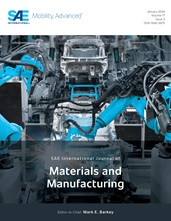Processing of Aluminium/Boron Carbide Composites and Functionally Graded Materials: A Literature Review
- Features
- Content
- Aluminum boron carbide (Al-B4C) composites have been a popular choice among scientists and designers for high-performance strength-to-weight ratio engineering applications. Requirements for such applications are met due to enhanced microstructure, mechanical properties, and ease of processing conditions. The performance and application of these composites are mostly dependent on certain parameters, like composition ratios of reinforcing particles, their sizes and wettability, the presence of additional phases, etc. Prominently, efforts are also being made to synthesize Al-B4C as functionally graded materials (FGMs) that have the potential to cater to the needs of advanced engineering applications and can facilitate new dimensions in the field of aluminum matrix composites (AMCs). In this article, an extensive review has been done on different combinations of boron carbide (B4C) particles as reinforcement along with processing techniques and how they affect the microstructure, hardness, wear, impact strength, and ultimate tensile strengths (UTSs) of aluminum (Al) metal matrix composites (MMCs).
- Pages
- 18
- Citation
- Kumar, D., Kumar, D., and Tigga, A., "Processing of Aluminium/Boron Carbide Composites and Functionally Graded Materials: A Literature Review," SAE Int. J. Mater. Manf. 15(2):93-109, 2022, https://doi.org/10.4271/05-15-02-0008.
